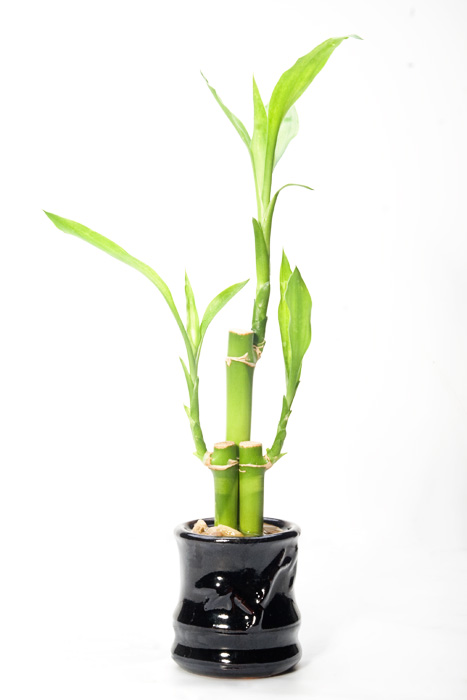The Lucky Bamboo, also known as Dracaena sanderiana, is a plant species that belongs to the Asparagaceae family. The plant is native to the African continent and is commonly found in tropical rainforests. Despite its name, the Lucky Bamboo is not actually a bamboo plant, but it gets its name from its appearance, which is similar to that of bamboo.
The Lucky Bamboo is a popular plant species in many cultures and is known for its many uses. It has been used in traditional Chinese medicine to treat a variety of ailments, and it is also believed to bring good luck, fortune, and prosperity. It is often given as a gift during special occasions such as weddings, housewarming parties, and other auspicious events.
Appearance
The Lucky Bamboo is a tall, slender plant that can grow up to two feet in height. It has thin, green stems that are topped with lush, green leaves. The leaves are long and narrow, and they can grow up to four inches in length. The plant also has a unique, spiraling growth pattern that adds to its visual appeal.
The Lucky Bamboo plant is often sold as a decorative plant in small pots or containers with water or soil. The plant can also be grown hydroponically, which means it can be grown in water without the need for soil.
Care
The Lucky Bamboo is a relatively easy plant to care for, making it a popular choice for many people. It requires moderate to high lighting levels to thrive, and it should be planted in a nutrient-rich substrate. If the plant is grown in water, the water should be changed regularly to prevent the growth of algae and bacteria.
The plant does not require frequent watering, but it should be watered regularly to keep the soil or water moist. Overwatering can cause the roots to rot, so it is important to ensure that the plant is not sitting in water for an extended period.
Propagation
The Lucky Bamboo is a very easy plant to propagate. Simply cut off a section of the stem and place it in water or in moist soil, and the plant will start to grow new roots and leaves. This makes it a great choice for those who want to propagate their plants and create more Lucky Bamboo for their collection.
Benefits
In addition to its aesthetic appeal, the Lucky Bamboo offers several benefits. The plant is known for its ability to absorb excess nutrients from the water, helping to reduce the risk of algae growth and other water quality issues. It also provides shelter and hiding places for fish in aquariums, which can help to reduce stress and promote a healthy environment.
The plant is also believed to have air-purifying properties, as it can help to remove pollutants and toxins from the air. This makes it a great choice for indoor environments, where air pollution can be a concern.
Uses
The Lucky Bamboo has many uses and is commonly used in home decor, both indoors and outdoors. It is often used to create bonsai trees, which are miniature versions of the plant that are grown in pots or containers. The plant is also used in aquariums to provide a natural and aesthetically pleasing environment for fish.
The plant has been used in traditional Chinese medicine for centuries and is believed to have several health benefits. It is often used to treat a variety of ailments, including headaches, fever, and high blood pressure.
Conclusion
The Lucky Bamboo is a beautiful and versatile plant that is easy to care for and has many uses. Its unique appearance and ease of propagation make it a popular choice among plant enthusiasts, and it can add a beautiful touch to any indoor or outdoor space. Whether you are looking for a plant to decorate your home or to add to your collection, the Lucky Bamboo is a great choice that is sure to bring joy and beauty to your surroundings.










![]()
